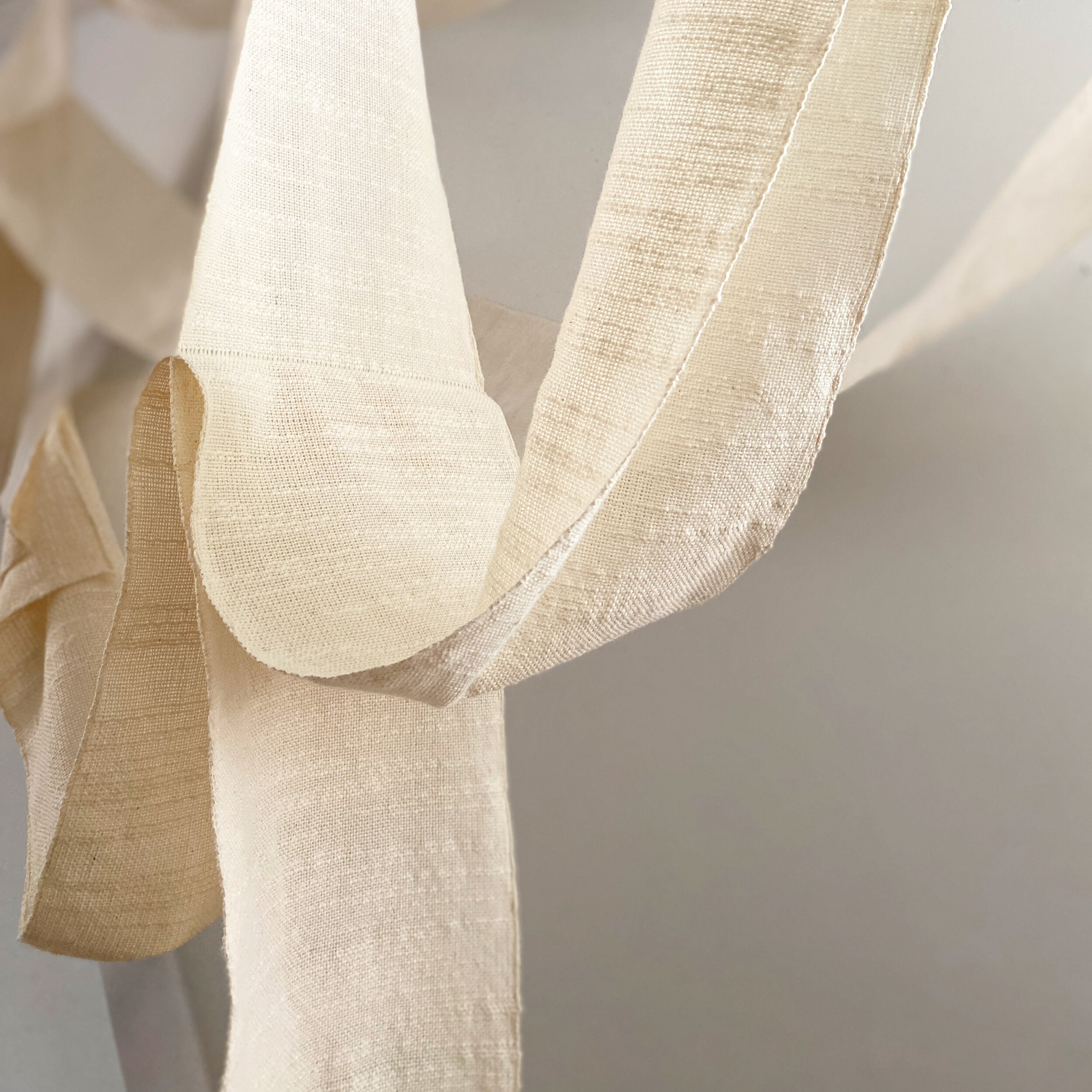


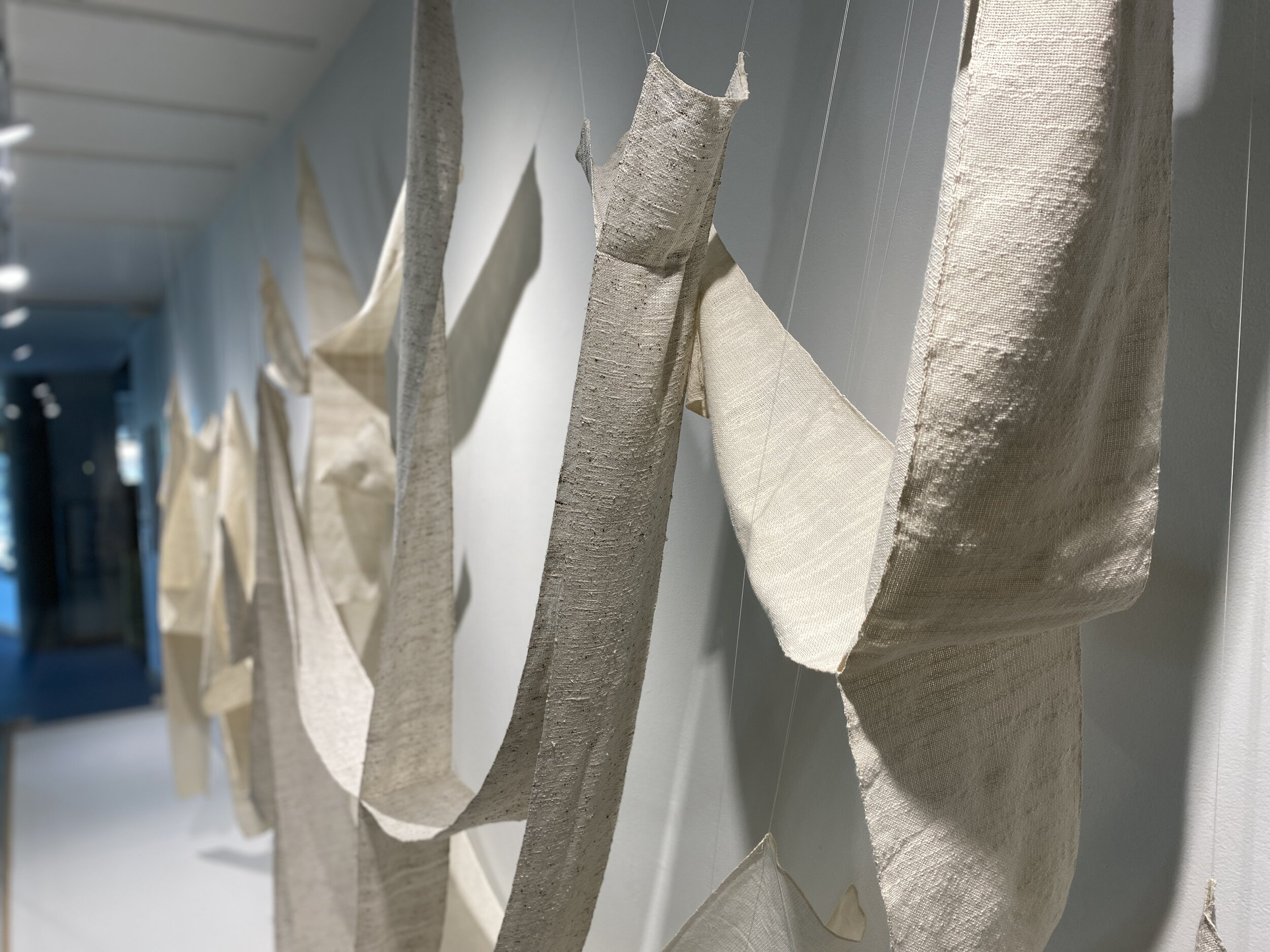
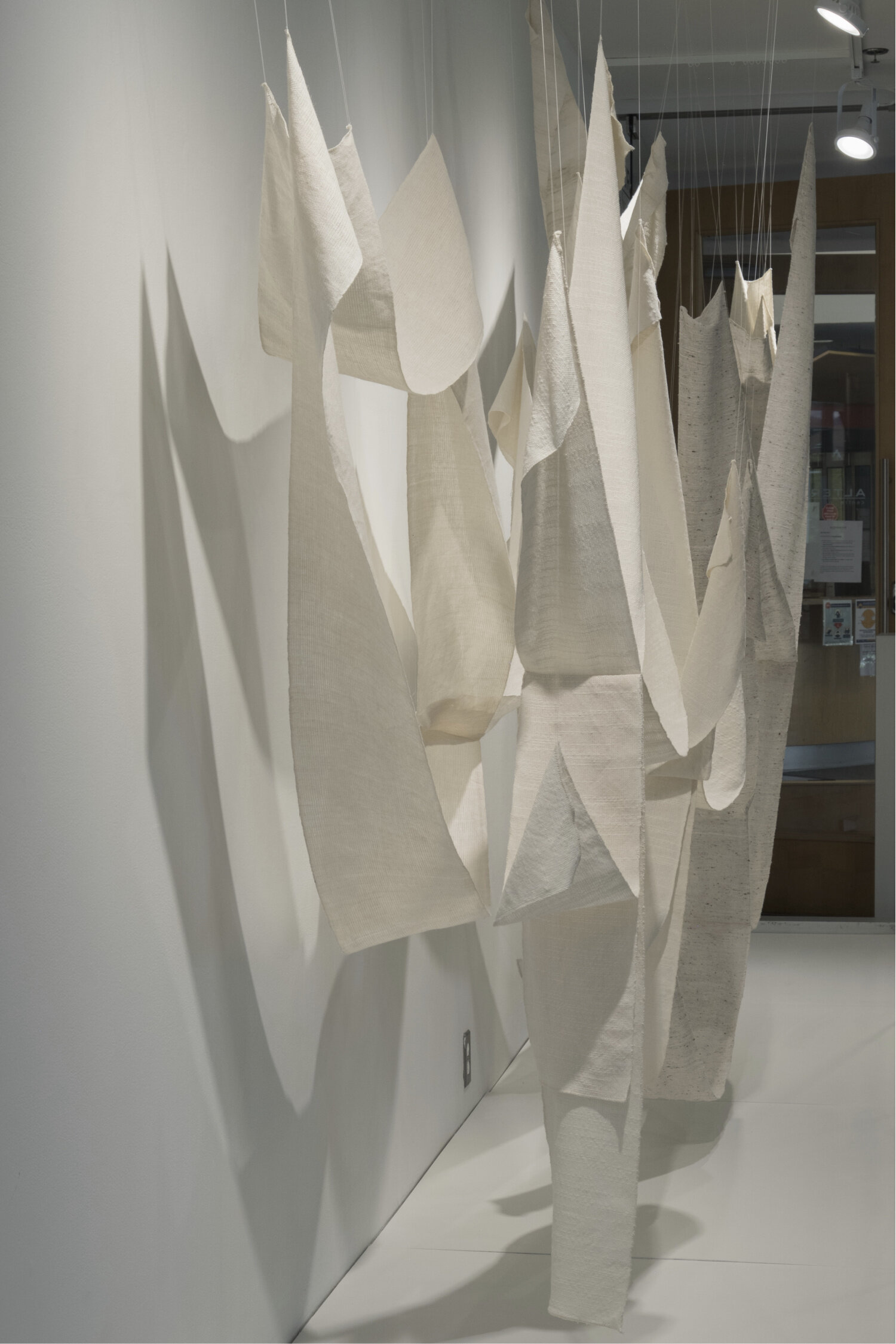
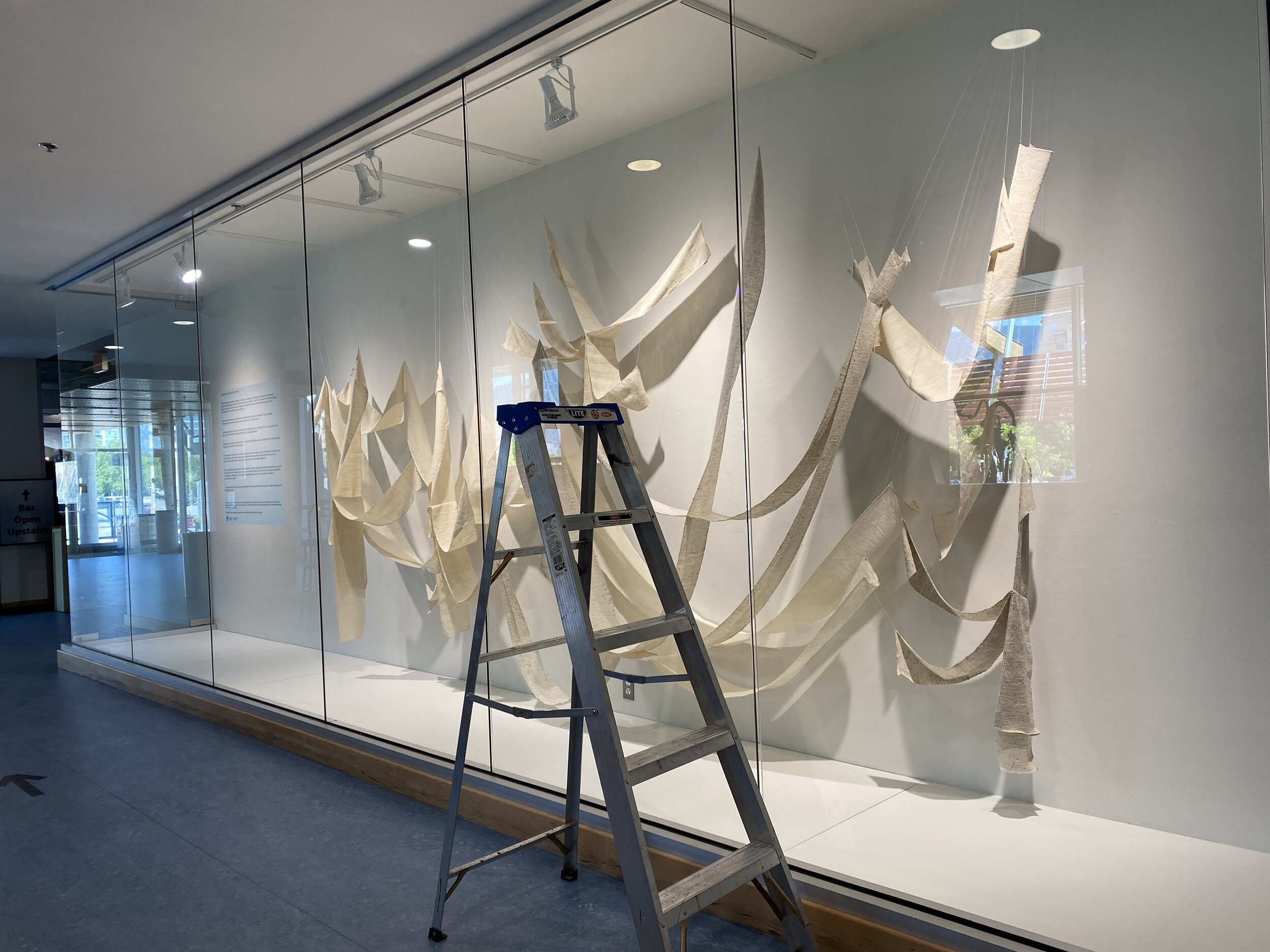

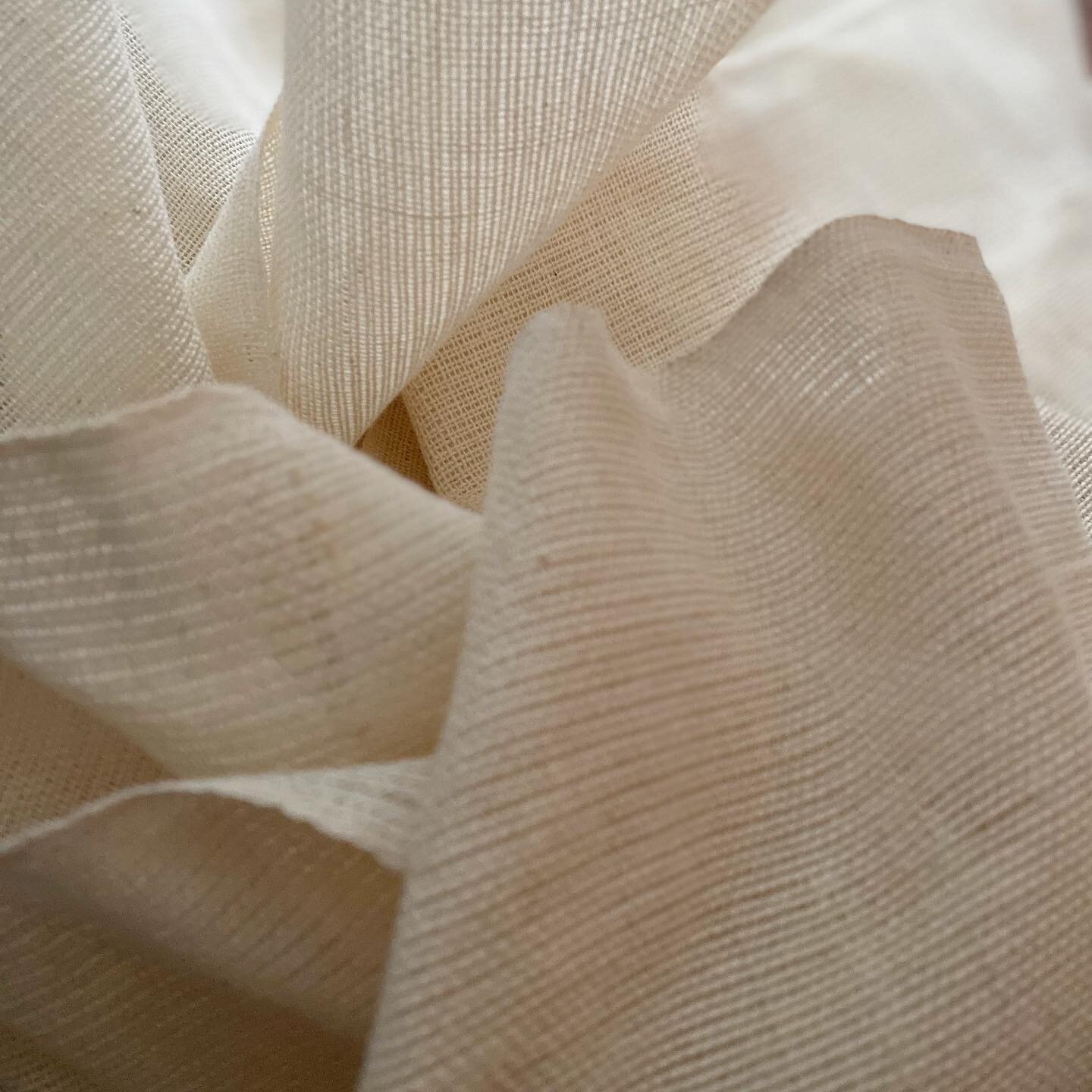

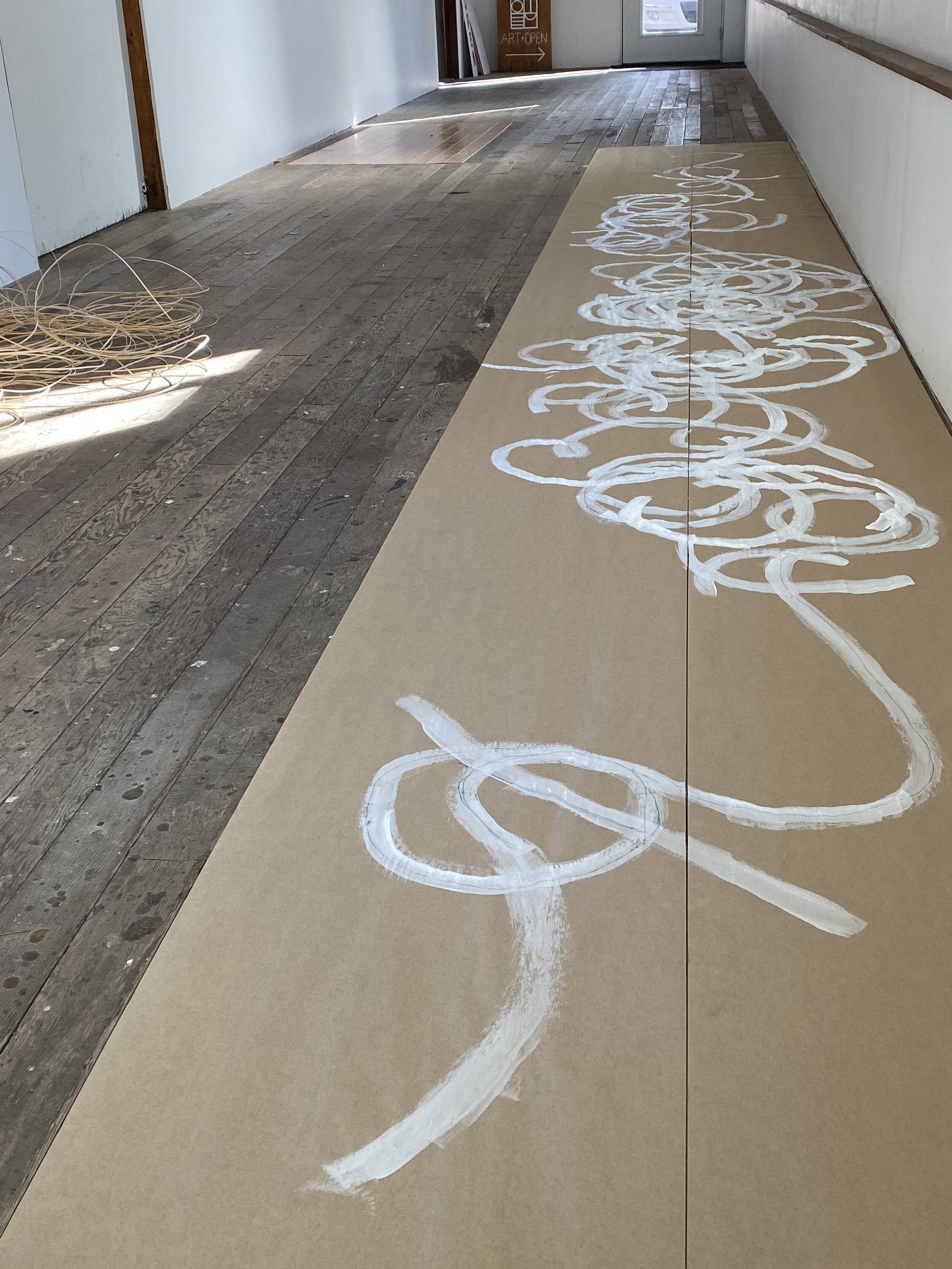
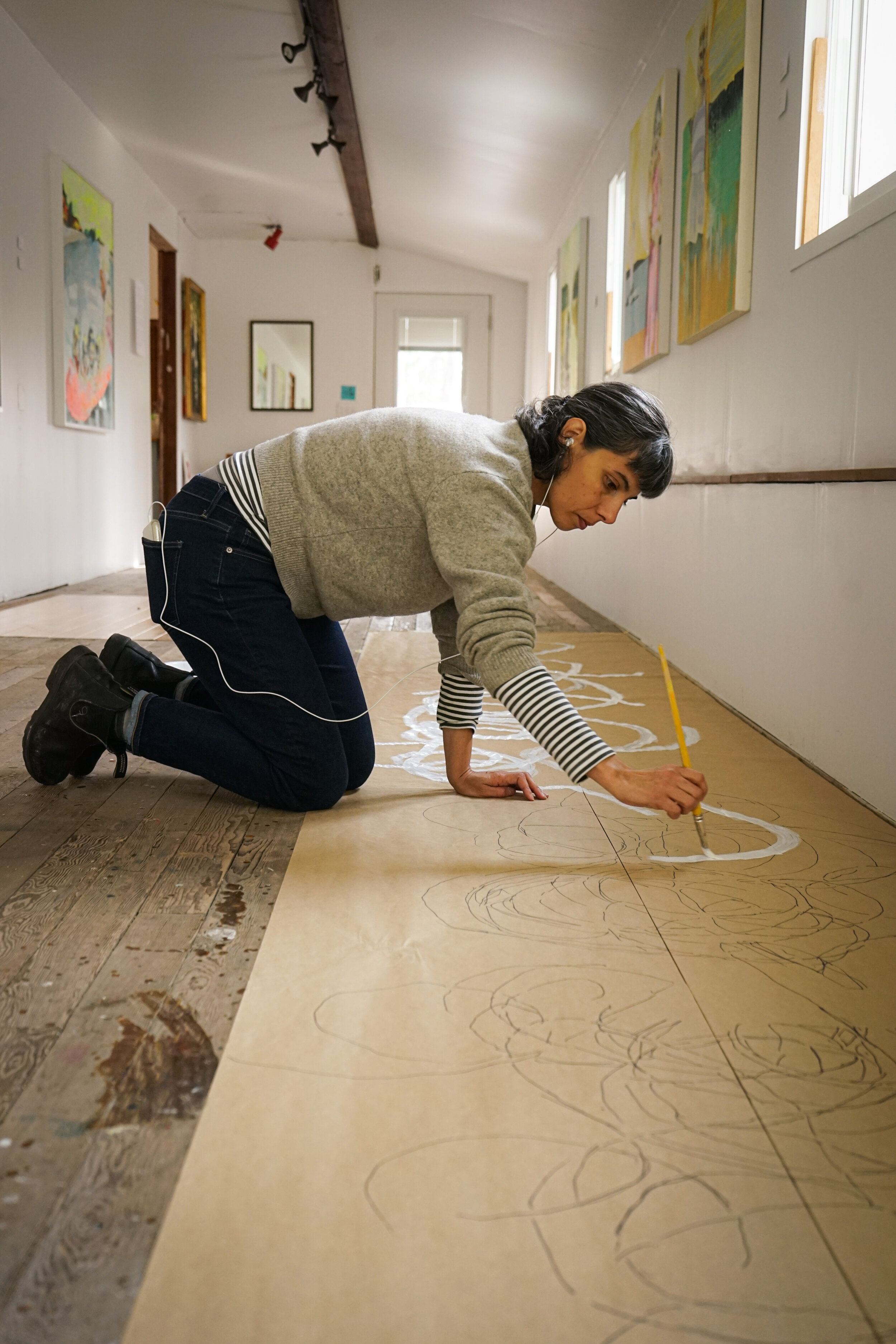
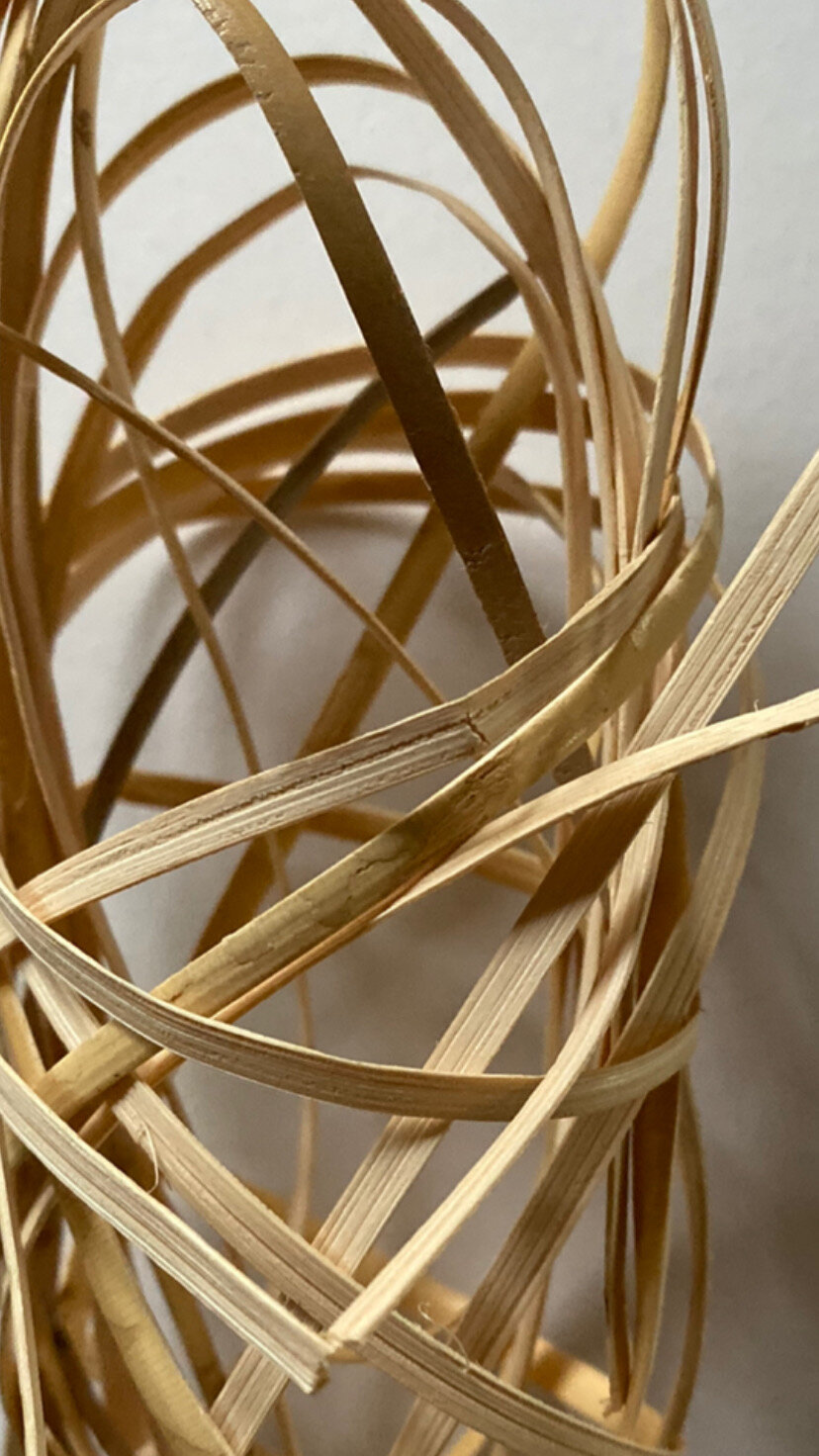
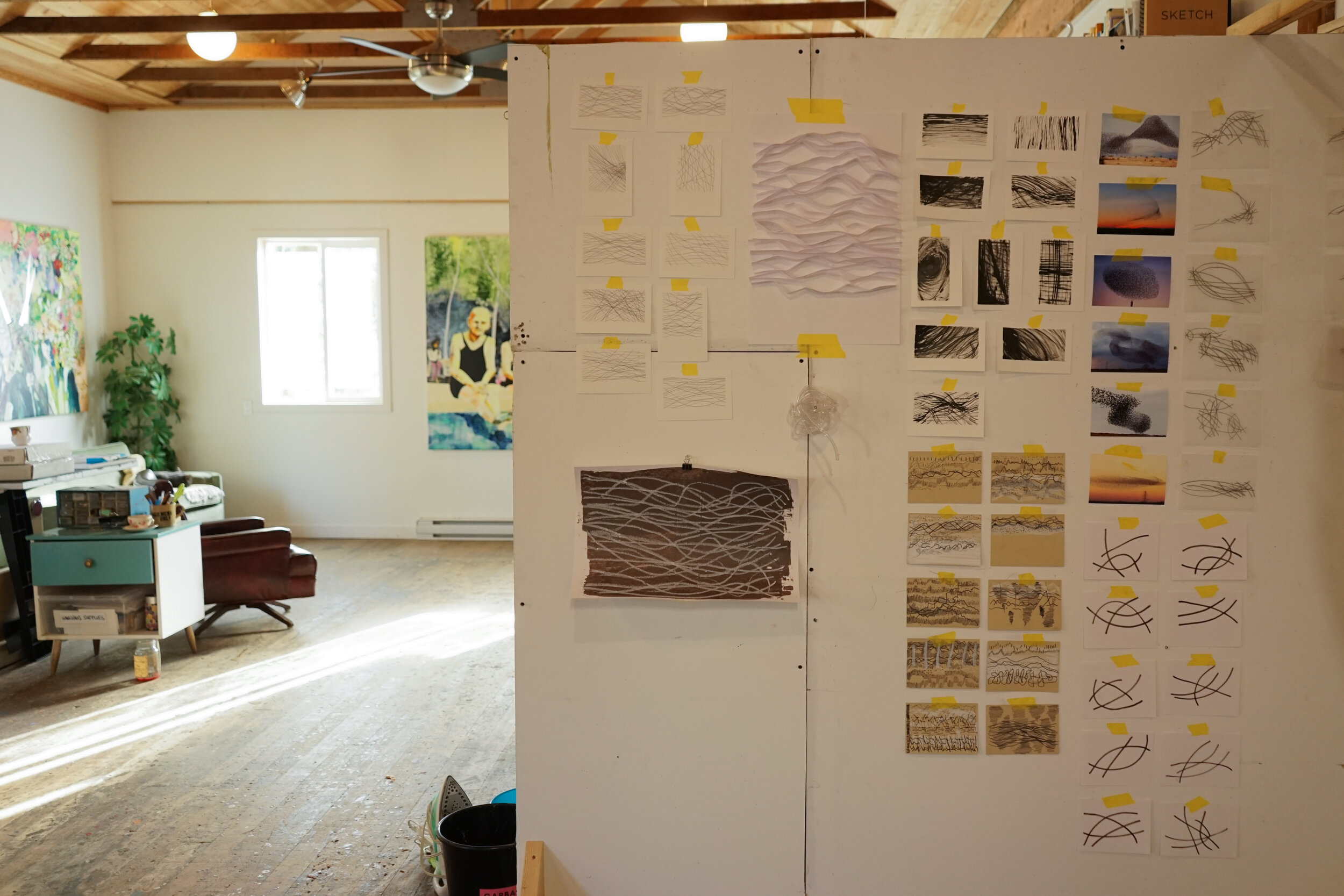
Robustness to Uncertainty
A hand woven score in seven parts
1.
When threatened by weather changes, or predators, starlings have developed robustness to uncertainty by systematically filtering information to form murmurations or swarms. While they may look chaotic, these physical gestures create formations when each individual starling filters the noise of the others and listens only to information from their seven nearest neighbours.
2.
Swarms and murmurations allow animals to complete tasks they could not do alone.
They are scalable, self-organizing, and responsive, like a multi-core processor or a musical score.
3.
Like individual starlings, each woven thread is both individual and part of a larger structure.
Human gesture, and patterns of movement are animated in the process of overlaying threads.
4.
Digital processes and physical experiences can be connected through weaving.
A complex form is created through manipulation of materials in a systematic way.
5.
The everydayness and ubiquity of cloth causes it to exist in a liminal space, a space of becoming, a temporal space of transformation. Cloth has the ability to exist unseen and undocumented while being central to both very personal and intimate relationships and collective memory, much like digital experiences.
6.
How can a physical gesture represent the remnants of an action: an ephemeral, temporal phenomenon, a space of becoming? How can it represent a murmuration, the swell of a piece of music, the forces of gravity, the gradations of a shadow, a conversation or a movement through digital space? Can it be done with a line drawn in three-dimensional space?
7.
If we freeze time to see self-organizing systems more closely can we discover ourselves in relation to physical and digital experiences?
Thank you to the Canada Council for the Arts for a Research and Creation grant which allowed me to attend a two week residency at the Ou Gallery in Duncan, BC and develop work for the Alternator Centre for Contemporary Art in Kelowna, BC.